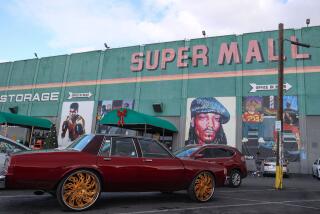Asian American consumers: Nearing $1 trillion in buying power

Some staggering new figures about Asian American consumers are out this month: Their buying power is up 523% since 1990, reaching $718.4 billion this year. If the demographic were a nation, it’d be the 18th-largest economy in the world.
Within five years, Asian American buying power will surge over $1 trillion, according to a report this month from Nielsen. At the moment, 28% of households in the group have annual incomes greater than $100,000, compared with 18% of all Americans.
They shop more often than their white counterparts but are less likely to use shopping lists or coupons, meaning that they’re more likely to be influenced by the product assortment, signage and deals in stores.
The point is this: “With their significant buying power and growing population that stems from a continuous wave of immigration, the Asian-American consumer group is one that marketers simply cannot ignore,” according to a statement from Frank Piotrowski, Nielsen’s senior vice president of measurement science.
There are 18.2 million Asian Americans now – the result of double-digit growth in 49 states between 2000 to 2010. That’s the fastest expansion of any multicultural demographic, including Latinos. In a dozen states, such as Texas, Minnesota and Nevada, the growth rate in certain counties exceeds 200%.
In 2010, 430,000 new Asian immigrants surged into the country. In five years, the Asian American total will reach 20.9 million.
But the population gives marketers several unique advantages. Nearly four in 10 Asian Americans flock to the coasts, living in Los Angeles, New York and San Francisco, making them easy to target with geographically specific ads, products and services.
Asian immigrants are more likely to be well-educated, due to U.S. immigration policies that favor investors and specialized workers. Half of working Asian Americans are in professional and managerial roles, compared with about 40% of Americans overall. While 28% of the people in the country older than age 25 have a bachelor’s degree, half of Asian Americans can say the same.
The demographic is also especially tech-savvy. Seven in 10 own smartphones. They visit computer and consumer electronics websites more often and spend more time on pages. Silicon Valley – and mobile advertisers – should take note, Nielsen suggests.
And American companies hoping to lure Asian Americans should consider a multi-lingual strategy. Though 61% of Asian Americans say they speak English very well, more than three-quarters use another language at home.
Asian media outlets, many of them using a native language, have boomed 1,115% from 1999 to 2010 in the U.S. The Assn. of National Advertisers found that 22% of companies now have a specialized Asian-language website to appeal to Asian Americans.
Asian Americans aren’t just powerful consumers, however. Nielsen points out that the number of Asian American-owned businesses soared 41% between 2002 and 2007, compared to 18% growth for all U.S. firms.
ALSO:
Speaking the shopping language of immigrants
Asian Americans enjoy greater representation in Congress
Fueled by immigration, Asians are fastest-growing U.S. group







